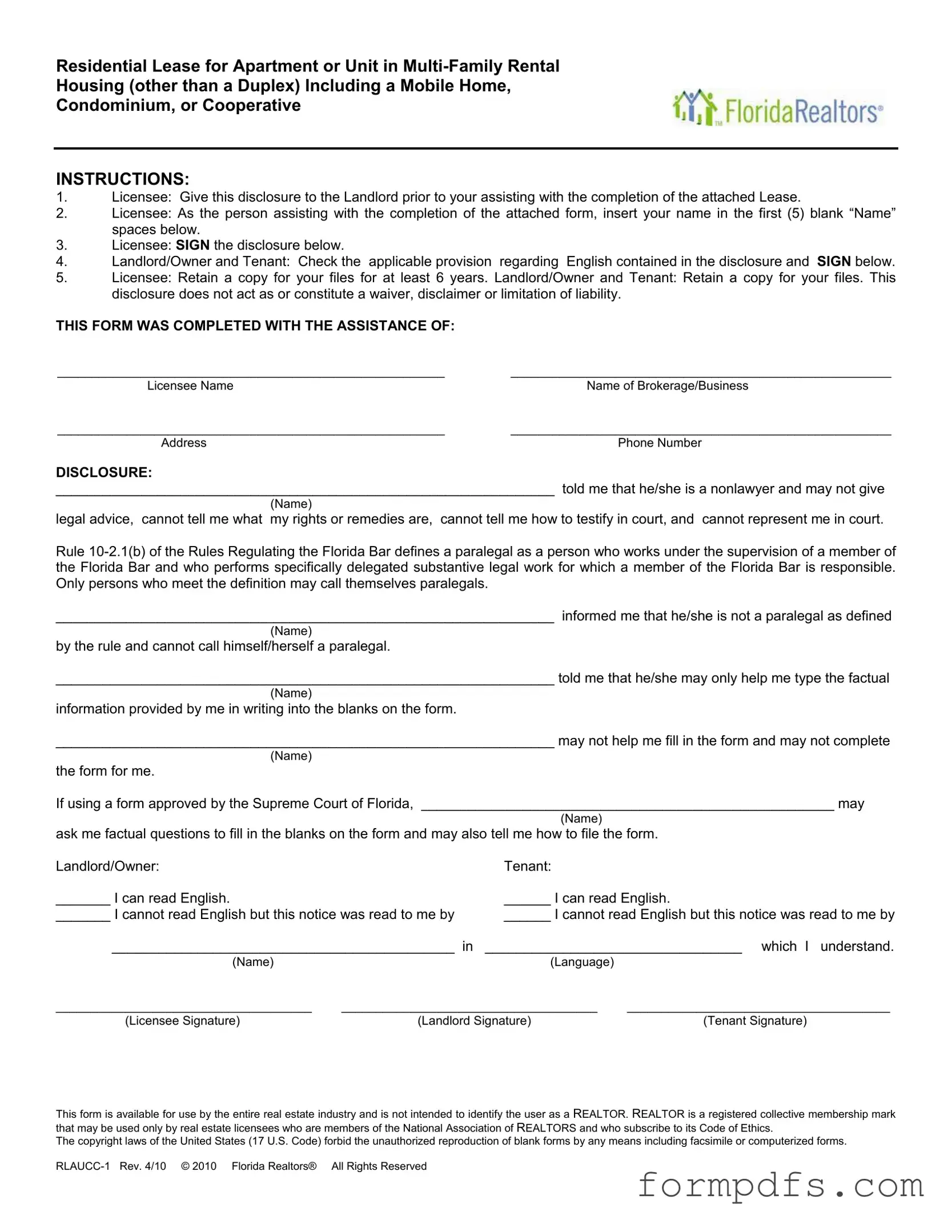What is the Florida Realtors Residential Lease form?
The Florida Realtors Residential Lease form is a standardized document used for leasing residential properties in Florida. It outlines the terms of the lease agreement between the landlord and tenant, including the rental amount, lease duration, and responsibilities of both parties. This form is designed to protect the rights of both landlords and tenants while ensuring clarity in the leasing process.
Who should use this form?
This form is intended for landlords and tenants engaging in a lease for an apartment or unit in multi-family rental housing, such as a mobile home, condominium, or cooperative. It is not suitable for commercial or agricultural properties. Both parties should be aware of their rights and obligations as outlined in the lease.
What are the key components of the lease?
The lease includes several important sections, such as the terms of the lease, property details, rent payments, security deposits, maintenance responsibilities, and access to the premises. Each section is designed to clearly define the expectations and responsibilities of both the landlord and tenant throughout the lease term.
What happens if the tenant cannot read or understand English?
If the tenant cannot read or understand English, the landlord or their agent must read the lease to the tenant in a language they understand. This ensures that the tenant is fully aware of the terms and conditions of the lease before signing. It is crucial for both parties to communicate effectively to avoid misunderstandings.
What is a security deposit, and how is it handled?
A security deposit is a sum of money that the tenant pays to the landlord at the start of the lease. This deposit serves as protection for the landlord against potential damages or unpaid rent. The landlord must hold the security deposit in a separate account and may be required to pay interest on it. At the end of the lease, if there are no damages, the landlord must return the deposit to the tenant.
What are the tenant's maintenance responsibilities?
The tenant is responsible for keeping the premises clean and sanitary, removing garbage, and maintaining plumbing fixtures. They must also use utilities and appliances in a reasonable manner. However, major maintenance or replacement of equipment typically falls under the landlord's responsibilities unless specified otherwise in the lease.
Can a tenant sublease the property?
Generally, a tenant cannot assign the lease or sublease the property without obtaining written approval from the landlord. This provision protects the landlord's interests and ensures that they have control over who occupies their property.
What should a tenant do if they experience issues with the property?
If a tenant encounters maintenance issues or other problems with the property, they should notify the landlord promptly. The landlord is obligated to address maintenance issues in a timely manner, provided they are responsible for those repairs. Clear communication is essential to resolving any disputes that may arise during the lease term.
